Edward A. Fox
Analyzing Quality, Bias, and Performance in Text-to-Image Generative Models
Jun 28, 2024Abstract:Advances in generative models have led to significant interest in image synthesis, demonstrating the ability to generate high-quality images for a diverse range of text prompts. Despite this progress, most studies ignore the presence of bias. In this paper, we examine several text-to-image models not only by qualitatively assessing their performance in generating accurate images of human faces, groups, and specified numbers of objects but also by presenting a social bias analysis. As expected, models with larger capacity generate higher-quality images. However, we also document the inherent gender or social biases these models possess, offering a more complete understanding of their impact and limitations.
ETDPC: A Multimodality Framework for Classifying Pages in Electronic Theses and Dissertations
Nov 07, 2023Abstract:Electronic theses and dissertations (ETDs) have been proposed, advocated, and generated for more than 25 years. Although ETDs are hosted by commercial or institutional digital library repositories, they are still an understudied type of scholarly big data, partially because they are usually longer than conference proceedings and journals. Segmenting ETDs will allow researchers to study sectional content. Readers can navigate to particular pages of interest, discover, and explore the content buried in these long documents. Most existing frameworks on document page classification are designed for classifying general documents and perform poorly on ETDs. In this paper, we propose ETDPC. Its backbone is a two-stream multimodal model with a cross-attention network to classify ETD pages into 13 categories. To overcome the challenge of imbalanced labeled samples, we augmented data for minority categories and employed a hierarchical classifier. ETDPC outperforms the state-of-the-art models in all categories, achieving an F1 of 0.84 -- 0.96 for 9 out of 13 categories. We also demonstrated its data efficiency. The code and data can be found on GitHub (https://github.com/lamps-lab/ETDMiner/tree/master/etd_segmentation).
AI Chatbot for Generating Episodic Future Thinking (EFT) Cue Texts for Health
Nov 06, 2023Abstract:We describe an AI-powered chatbot to aid with health improvement by generating Episodic Future Thinking (EFT) cue texts that should reduce delay discounting. In prior studies, EFT has been shown to address maladaptive health behaviors. Those studies involved participants, working with researchers, vividly imagining future events, and writing a description that they subsequently will frequently review, to ensure a shift from an inclination towards immediate rewards. That should promote behavior change, aiding in health tasks such as treatment adherence and lifestyle modifications. The AI chatbot is designed to guide users in generating personalized EFTs, automating the current labor-intensive interview-based process. This can enhance the efficiency of EFT interventions and make them more accessible, targeting specifically those with limited educational backgrounds or communication challenges. By leveraging AI for EFT intervention, we anticipate broadened access and improved health outcomes across diverse populations
MetaEnhance: Metadata Quality Improvement for Electronic Theses and Dissertations of University Libraries
Mar 30, 2023Abstract:Metadata quality is crucial for digital objects to be discovered through digital library interfaces. However, due to various reasons, the metadata of digital objects often exhibits incomplete, inconsistent, and incorrect values. We investigate methods to automatically detect, correct, and canonicalize scholarly metadata, using seven key fields of electronic theses and dissertations (ETDs) as a case study. We propose MetaEnhance, a framework that utilizes state-of-the-art artificial intelligence methods to improve the quality of these fields. To evaluate MetaEnhance, we compiled a metadata quality evaluation benchmark containing 500 ETDs, by combining subsets sampled using multiple criteria. We tested MetaEnhance on this benchmark and found that the proposed methods achieved nearly perfect F1-scores in detecting errors and F1-scores in correcting errors ranging from 0.85 to 1.00 for five of seven fields.
Automatic Metadata Extraction Incorporating Visual Features from Scanned Electronic Theses and Dissertations
Jul 01, 2021



Abstract:Electronic Theses and Dissertations (ETDs) contain domain knowledge that can be used for many digital library tasks, such as analyzing citation networks and predicting research trends. Automatic metadata extraction is important to build scalable digital library search engines. Most existing methods are designed for born-digital documents, so they often fail to extract metadata from scanned documents such as for ETDs. Traditional sequence tagging methods mainly rely on text-based features. In this paper, we propose a conditional random field (CRF) model that combines text-based and visual features. To verify the robustness of our model, we extended an existing corpus and created a new ground truth corpus consisting of 500 ETD cover pages with human validated metadata. Our experiments show that CRF with visual features outperformed both a heuristic and a CRF model with only text-based features. The proposed model achieved 81.3%-96% F1 measure on seven metadata fields. The data and source code are publicly available on Google Drive (https://tinyurl.com/y8kxzwrp) and a GitHub repository (https://github.com/lamps-lab/ETDMiner/tree/master/etd_crf), respectively.
ScanBank: A Benchmark Dataset for Figure Extraction from Scanned Electronic Theses and Dissertations
Jun 23, 2021



Abstract:We focus on electronic theses and dissertations (ETDs), aiming to improve access and expand their utility, since more than 6 million are publicly available, and they constitute an important corpus to aid research and education across disciplines. The corpus is growing as new born-digital documents are included, and since millions of older theses and dissertations have been converted to digital form to be disseminated electronically in institutional repositories. In ETDs, as with other scholarly works, figures and tables can communicate a large amount of information in a concise way. Although methods have been proposed for extracting figures and tables from born-digital PDFs, they do not work well with scanned ETDs. Considering this problem, our assessment of state-of-the-art figure extraction systems is that the reason they do not function well on scanned PDFs is that they have only been trained on born-digital documents. To address this limitation, we present ScanBank, a new dataset containing 10 thousand scanned page images, manually labeled by humans as to the presence of the 3.3 thousand figures or tables found therein. We use this dataset to train a deep neural network model based on YOLOv5 to accurately extract figures and tables from scanned ETDs. We pose and answer important research questions aimed at finding better methods for figure extraction from scanned documents. One of those concerns the value for training, of data augmentation techniques applied to born-digital documents which are used to train models better suited for figure extraction from scanned documents. To the best of our knowledge, ScanBank is the first manually annotated dataset for figure and table extraction for scanned ETDs. A YOLOv5-based model, trained on ScanBank, outperforms existing comparable open-source and freely available baseline methods by a considerable margin.
Differentially Private Synthetic Medical Data Generation using Convolutional GANs
Dec 22, 2020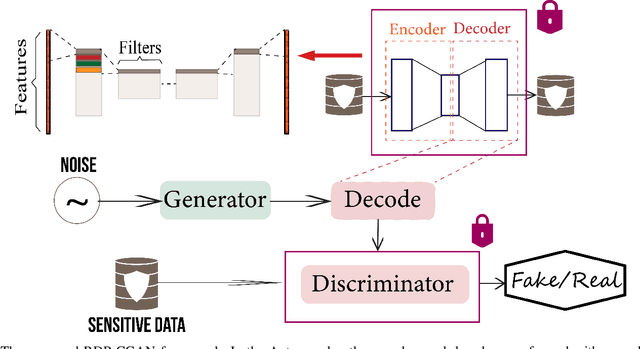
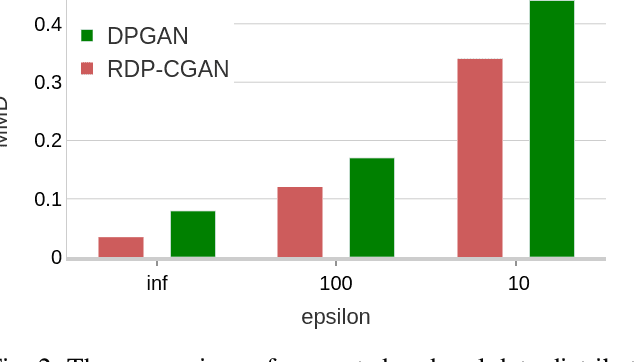
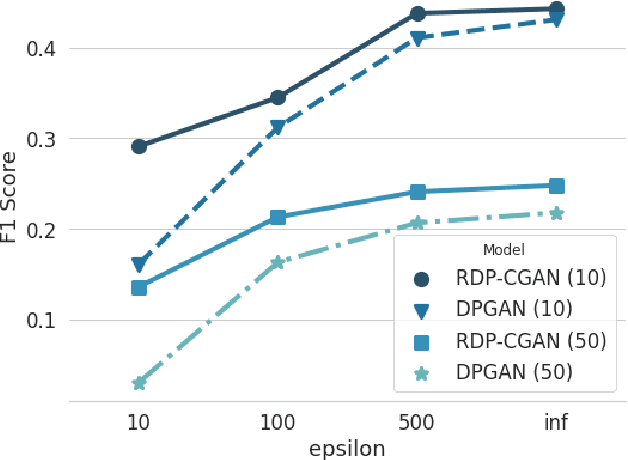
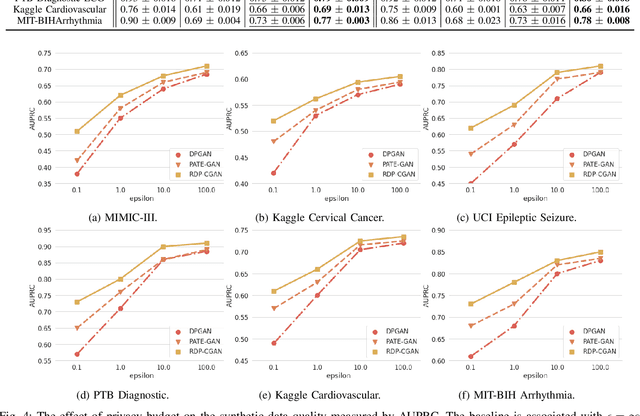
Abstract:Deep learning models have demonstrated superior performance in several application problems, such as image classification and speech processing. However, creating a deep learning model using health record data requires addressing certain privacy challenges that bring unique concerns to researchers working in this domain. One effective way to handle such private data issues is to generate realistic synthetic data that can provide practically acceptable data quality and correspondingly the model performance. To tackle this challenge, we develop a differentially private framework for synthetic data generation using R\'enyi differential privacy. Our approach builds on convolutional autoencoders and convolutional generative adversarial networks to preserve some of the critical characteristics of the generated synthetic data. In addition, our model can also capture the temporal information and feature correlations that might be present in the original data. We demonstrate that our model outperforms existing state-of-the-art models under the same privacy budget using several publicly available benchmark medical datasets in both supervised and unsupervised settings.
On the Evaluation of Generative Adversarial Networks By Discriminative Models
Oct 07, 2020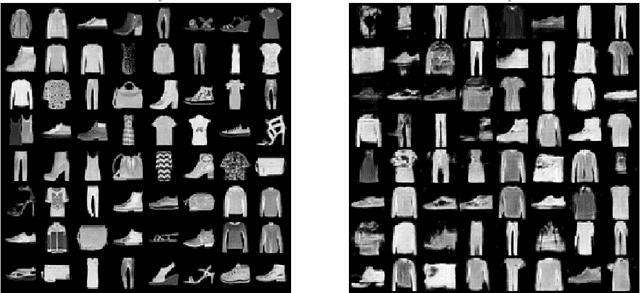
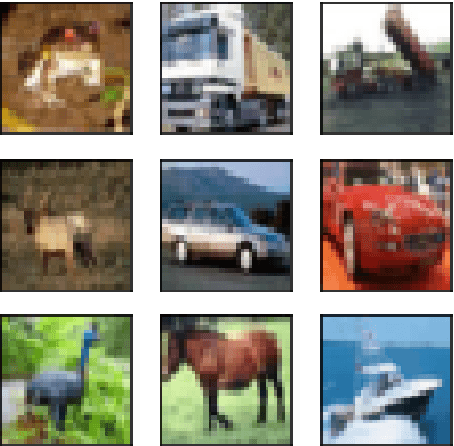
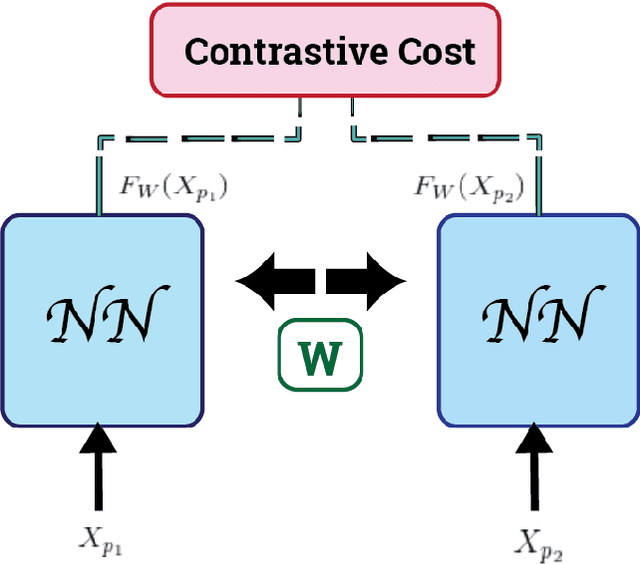
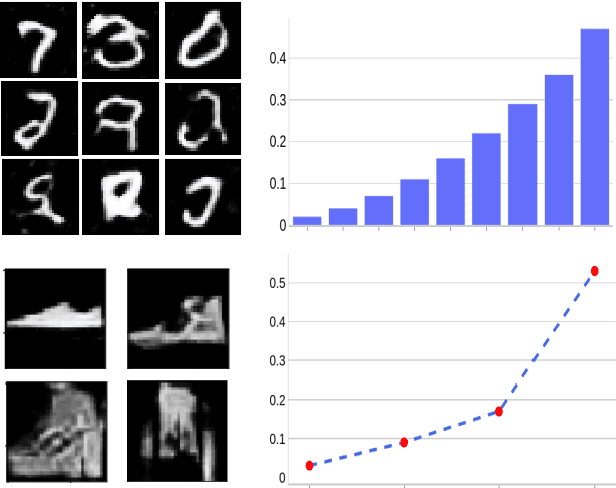
Abstract:Generative Adversarial Networks (GANs) can accurately model complex multi-dimensional data and generate realistic samples. However, due to their implicit estimation of data distributions, their evaluation is a challenging task. The majority of research efforts associated with tackling this issue were validated by qualitative visual evaluation. Such approaches do not generalize well beyond the image domain. Since many of those evaluation metrics are proposed and bound to the vision domain, they are difficult to apply to other domains. Quantitative measures are necessary to better guide the training and comparison of different GANs models. In this work, we leverage Siamese neural networks to propose a domain-agnostic evaluation metric: (1) with a qualitative evaluation that is consistent with human evaluation, (2) that is robust relative to common GAN issues such as mode dropping and invention, and (3) does not require any pretrained classifier. The empirical results in this paper demonstrate the superiority of this method compared to the popular Inception Score and are competitive with the FID score.
Aspect Classification for Legal Depositions
Sep 09, 2020



Abstract:Attorneys and others have a strong interest in having a digital library with suitable services (e.g., summarizing, searching, and browsing) to help them work with large corpora of legal depositions. Their needs often involve understanding the semantics of such documents. That depends in part on the role of the deponent, e.g., plaintiff, defendant, law enforcement personnel, expert, etc. In the case of tort litigation associated with property and casualty insurance claims, such as relating to an injury, it is important to know not only about liability, but also about events, accidents, physical conditions, and treatments. We hypothesize that a legal deposition consists of various aspects that are discussed as part of the deponent testimony. Accordingly, we developed an ontology of aspects in a legal deposition for accident and injury cases. Using that, we have developed a classifier that can identify portions of text for each of the aspects of interest. Doing so was complicated by the peculiarities of this genre, e.g., that deposition transcripts generally consist of data in the form of question-answer (QA) pairs. Accordingly, our automated system starts with pre-processing, and then transforms the QA pairs into a canonical form made up of declarative sentences. Classifying the declarative sentences that are generated, according to the aspect, can then help with downstream tasks such as summarization, segmentation, question-answering, and information retrieval. Our methods have achieved a classification F1 score of 0.83. Having the aspects classified with a good accuracy will help in choosing QA pairs that can be used as candidate summary sentences, and to generate an informative summary for legal professionals or insurance claim agents. Our methodology could be extended to legal depositions of other kinds, and to aid services like searching.
CorGAN: Correlation-Capturing Convolutional Generative Adversarial Networks for Generating Synthetic Healthcare Records
Mar 04, 2020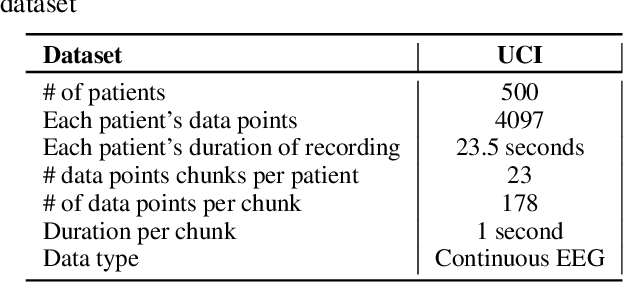
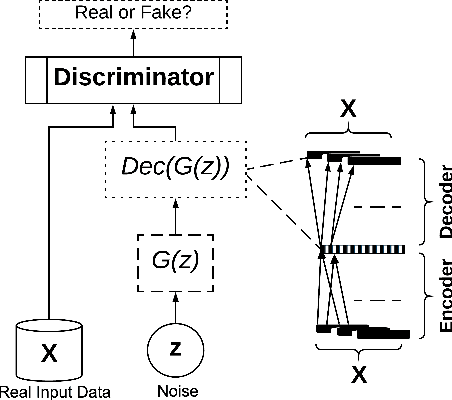


Abstract:Deep learning models have demonstrated high-quality performance in areas such as image classification and speech processing. However, creating a deep learning model using electronic health record (EHR) data, requires addressing particular privacy challenges that are unique to researchers in this domain. This matter focuses attention on generating realistic synthetic data while ensuring privacy. In this paper, we propose a novel framework called correlation-capturing Generative Adversarial Network (CorGAN), to generate synthetic healthcare records. In CorGAN we utilize Convolutional Neural Networks to capture the correlations between adjacent medical features in the data representation space by combining Convolutional Generative Adversarial Networks and Convolutional Autoencoders. To demonstrate the model fidelity, we show that CorGAN generates synthetic data with performance similar to that of real data in various Machine Learning settings such as classification and prediction. We also give a privacy assessment and report on statistical analysis regarding realistic characteristics of the synthetic data. The software of this work is open-source and is available at: https://github.com/astorfi/cor-gan.
 Add to Chrome
Add to Chrome Add to Firefox
Add to Firefox Add to Edge
Add to Edge